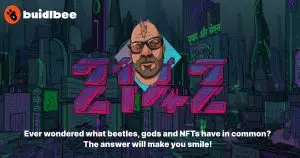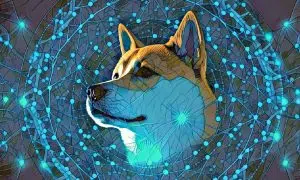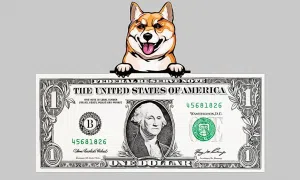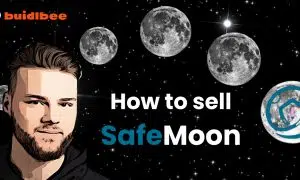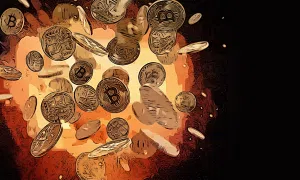Contents
- 1 Who are you, and what part do you play in the 2142 project?
- 2 How did you come up with the plot for the comic book?
- 3 Are comic books only the foundation of the 2142 transmedia franchise, or will you release comic books along with the other media project?
- 4 How have the DOA members responded to the project so far?
- 5 You seem to support DAO technology; can you explain why that is?
- 6 How do you feel about NFT technology?
- 7 What advice would you give to indie developers who want to incorporate NFT or DAO technology without an established fanbase?
- 8 Do you think that creatives need to focus on producing someone of value before focusing on NFT technology?
- 9 How do you feel about the metaverse?
- 10 What real-world issue would you use Web3 technology to solve?
- 11 How should new artists go about promoting their NFT collection?
- 12 I watched the trailer read the comic book, and there’s this little feather. Is it an Easter egg?
- 13 What similarities do you draw between psychedelic experiences and Web3 regarding the next evolution of human communication?
- 14 Final words
2142 is the first NFT-backed transmedia franchise, and this is what the CEO of the company has to say about the revolutionary collection and its comic book.
If you want a complete overview of this project, there are two articles that can help you. The fundamental properties of the 2142 project are explained in this article while the future of the project and its underlying goals are explained in this article.
Who are you, and what part do you play in the 2142 project?
I’m Zica. I’m from Belgrade Serbia, and I’m the CEO and CCO of the 2142 start-up that I founded with my partners actually around one year ago. I spent around 11 years working as a copywriter [and] creative director in advertising here in Bevin, Serbia.
The brand new newsletter with insights, market analysis and daily opportunities.
Let’s grow together!
I managed to switch to video games full time, thankfully. Then I started narrative design in the creative aspect of development. So, some of the games, like there’s a CMO in the company, I published a couple of video games with like 150 to 200 million downloads.
Then we did a couple of shooters and one PC action RPG, and then we did one party video game. We got investments and stuff like that. So, a lot of things were going on, actually. Honestly, I wasn’t into crypto, and I wasn’t even interested in NFT because of what I saw online and what NFT, the popular culture, represents, and what the majority of collections look like. From what I saw online, for me it was ugly and pointless.
I got the vibe that someone was scamming me, selling those things. And I realized like later about the blockchain and crypto industry. But I didn’t find something really interesting or valuable to me. And at one point, I have two partners in this company, co-founders of a crypto hedge fund, one of the 35 – 36 crypto hedge funds, and they’re pioneers here in Serbia. We started to talk about the idea, and then actually realized what is an NFT and how you can use a smart contract in order to gamify different types of transmedia content.
How you can involve the community and give them a sense of ownership because of it and tied to what they are actually. They wanted to do the comic, actually a comic book. And for me, it was like a dream come true. ‘I’m gonna write a comic book.’ I am a huge comic book fan, of course.
I studied classical literature somehow for my comic books, the most beautiful form of art personally for me because of the visual storytelling kind of it. I was super happy, of course, to accept the opportunity. At the time there were quite a different bunch of comic books and comic books that appeared, and we didn’t want to do exactly the same thing as others.
So, we made a gamified system to assemble the comic book, which was similar to albums, which is pickers we all had as a kid, which means you’re minting bundles of NFTs, of 21 NFTs for around 30 bucks, which is like 0.002 interiors. You have a probability that you’re gonna get a cover drop, you have an empty page and have a comic book panel in a picture.
To assemble the whole comic book issue number one, which is 34 pages, you need to buy around 10 bundles, which costs around $300. Personally, I have hundreds of physical comic books, but I wouldn’t pay $300 for a virtual NFT comic book, especially in a bear market. Instead, we decided to focus on producing a video game. However, we still want to explain the connection between the two. When you buy at least 10 bundles, you will get duplicates because the items are randomly assembled. Instead of forcing people to constantly buy new bundles, we give them the opportunity to exchange or sell their duplicates on our own marketplace or on any other platform. However, to read the comic book, you need to come to our website and connect to our meta macro.
When you assemble the whole comic book and reveal the story, you will get a drop, which can be a character, location, or item. If you drop a unique NFT item that appeared in the comic book, it means that the item is your ownership in whatever transmedia we produce. We are currently working on two transmedia pieces aside from the comic book and you will get ownership and profit share when they appear. The items will also appear as actual items in the video game that we are currently in pre-production for.
How did you come up with the plot for the comic book?
My partner wanted to write a novel about the myth behind Bitcoin and the urban myths surrounding it. We decided to create a cyberpunk comic book or media with a lot of twists. We are huge fans of sci-fi, horror, and fantasy and the idea was to create a futuristic world where pollution is everywhere and people are hooked on a dopamine-driven, addictive virtual reality. In this world, brands operate as religions and two years after the last Bitcoin is mined, Soto Vault activates and shuts down major corporations such as Black Rock and Vanguard. He then starts shutting down Metaverse clusters and people start to rebel against the centralized power.
The twist is that cosmic entities are awakening on Earth and sacred hallucinogens start to appear, allowing people to become spiritually awake. This all leads to the end of the great cosmic cycle and the destruction of the order in our solar system. In parallel mythologies, this moment is seen as the end of an era and cosmic intelligence starts to spread across the universe and awaken on Earth. This is all integrated into the comic book and video game.
Are comic books only the foundation of the 2142 transmedia franchise, or will you release comic books along with the other media project?
We made energy drops as ownership for a comic book and are testing a decentralized narrative technique. When you assemble the whole comic book, you can merge the drops and create a spin-off comic book with a unique story incorporating the location, character, and items. We are currently pitching for investment and developing the pre-production for a video game and tabletop RPG while continuing work on the comic book. Our plan for video game development is 4-5 years and during that time, comic book members can engage in voting and influence world-building and storyline details. The story is not 100% defined and can go in different directions.
How have the DOA members responded to the project so far?
We haven’t opened up the voting pools yet. We have prepared like 10 of them. One is like, they can choose, it’s a spoiler now, but they can choose whether the nuclear war will happen in 2023. Obviously, the world will look different in the future. And for now, we can release the second comic application. Three months or something.
We are gonna announce the video game, and we are gonna publish the whole final feature of the whole platform, which are the voting system and system for reward jobs. Now we have a whole marketplace. So, you can assemble the comic book, and you can sell your duplicates.
You can sell the covers you have. There we still have two features of our plot [or] platform to develop. And we are also in the process of reproduction for the video game. So, in three months, everything’s gonna be online.
For now, you can mint the comic book and discover it, sell it [and] buy it. But, the whole reward process [or] the whole feature will be finished in like three months.
You seem to support DAO technology; can you explain why that is?
My view on DAO is that it is a good way for a video game studio to communicate with their community and reward them for their input. We are not promising ultimate decentralization, but the DAO will have a profit share pool and creative input for the video game. We are designing the system for tokenization of the game and how to connect the drops from the comic book to the game.
How do you feel about NFT technology?
For video games, it can be a very powerful tool for engagement and reward. NFTs can be used for loyalty systems and gamification, creating complex and effective systems for players. In a video game, a marketplace with NFTs as items can be revolutionary and allow players to buy and sell items for in-game currency or real-world money. Gamifying this system can increase player engagement and reward them for their participation.
It would be insane and revolutionary, you know because it is an economic system, the way you gain is an economic system for itself. And whenever you can gamify that system and if these can be applied, it opens up new possibilities for gaming and virtual economies. The potential for blockchain and NFTs in the gaming industry is huge, and it’s exciting to think about the ways that it can be used to create more immersive and engaging experiences for players. The ability to trace the ownership of virtual items and have them be traded and sold on a marketplace is a game changer, and it has the potential to revolutionize the industry.
What advice would you give to indie developers who want to incorporate NFT or DAO technology without an established fanbase?
Blockchain and NFTs have the potential to create complex and effective loyalty systems and gamification for video games. For example, imagine a marketplace like Diablo with the added element of blockchain and NFTs as items that players can buy and sell for. This would be revolutionary for the gaming industry, as it would create an economic system within the game itself. Gamification and NFTs can also enhance the player experience by allowing them to sell in-game items for real profits. However, the adoption of blockchain and NFTs in the gaming industry is still in its early phase and has yet to be fully embraced by developers and publishers.
So, the idea is to make a great video game and then connect it to the blockchain and NFTs as a way to provide players with more utility and value for their in-game efforts. This way, players can benefit from the blockchain economy without having to focus on it too much during gameplay. Additionally, the use of NFTs allows for a more complex and effective loyalty system, adding another layer of engagement and reward for players. Overall, the goal is to create a seamless and immersive experience for players, while also leveraging the power of blockchain technology and NFTs to enhance the game’s economy and value proposition.
Do you think that creatives need to focus on producing someone of value before focusing on NFT technology?
It is going to take time for cool projects to appear and for big studios and companies to start embracing blockchain and NFTs in their video games. The majority of blockchain games currently have low production value and would not compete in the normal gaming marketplace. It is important for projects to have a strong narrative and real utility value in order to be successful. As technology continues to evolve, the potential for complex and effective use of blockchain and NFTs in video games will increase.
If its some famous painter digital artist that’s like an individual limited collection of his real digital art pieces, that’s a different thing, but as the main thing that’s people have been like bombarded with is empty collections.
And when you have a comic book fan who is crazy about European or American or British or Japanese comics, and he sees some like barely drawn memes not real comic books you know correlating to those collections, they got repulse. Of course when you have gamers, gamers are a super demanding audience.
I have a seven-year-old kid and he cannot be fooled, you know, to play a video game. He really knows what the game needs to have, and he’s seven, it’s the same when you’re 43 like me. It’s [a] very demanding audience and the majority of blockchain videos are also rubbish from the perspective of someone who has been making video games for [non]blockchain gamers. But can you imagine a majority of blockchain video games if you strip out the blockchain model out of them? You’re gonna [have a very bad time.]
I believe that all technology is still not ready to do super complex stuff because maybe tomorrow some things might be changed, some services incorporated, some I don’t know other views in web and blockchain or Anta contracts or whatever you know is still very new.
And what I said to build huge [or] very complex projects, I don’t know let’s [say] League of Legends or the World of Work on a blockchain is gonna take a lot of time and it’s a lot of risks. Just focus on making a really good video game.
How do you feel about the metaverse?
The first question is about the metaverse right now. We are talking about hiding behind our avatars and communicating and sharing information. For me, in a higher symbolical or spiritual context, it has existed for thousands of years.
I have been to many crypto conferences and “Metaverse” is always this high core metaphor, which are different ways to immerse in a digital world that we share. There are huge companies investing in meta and they will not support super radical, decentralized democratic systems where you want to be manipulated to be a market marketing tool.
It will be the same as ever, just different ways to immerse. People will start using VR headsets and immerse, and I truly believe that it is a way to share information with someone else, to communicate inside the digital world. It can be VR, augmented reality, or whatever. For me, it’s the metaverse and huge companies are promising big things, but I still haven’t seen the real metaverse they promised.
The second question was about the VR gaming market. I believe the VR gaming market is still in its infancy and it will take a lot of time and resources to build complex games. Just focus on making a really good game.
What real-world issue would you use Web3 technology to solve?
Can we use it to track down corruption in monitoring processes, payments, in the distribution of funds for the NGO sector, or something like that? You know when you can really [find out] what’s happened with the money, you know, and where did [the] money [go]? And you know, it’s like a lot of NGOs are fully corrupted of course, and they’re spending the funds and greenwashing the corporations.
Maybe it can be used to show off some public processes behind it. Maybe it can [be] used in education. For me, I truly believe that education should be available and free [to] absolutely everyone if you want to. Of course, to have [a] super fancy job that you want to go to super fancy college, that’s okay, fine. But everyone else needs to have a right to be educated and maybe blockchain technology through different systems online can help people. Some communication system in areas or systemize it, or to make it more affordable. Maybe these are all utilitarian like aspects of it.
Maybe it can be used for a charity or something like that. There’s also a question where, when we talk about the blockchain and crypto, [the] ecological aspect of it. A lot of electricity, you know, for the last 10 years has been spent, a lot of CO2, our stratosphere because of it, so maybe there are ways to make things more greener, to automate, I truly believe as the artificial intelligence might [be] better than blockchain id it’s gonna be applied in a humanitarian way, of course not for war and profits. Unfortunately, [that’s] what’s happening in the world and it’s gonna [continue] happen.
How should new artists go about promoting their NFT collection?
I can give you a couple of ideas. I’ll be glad. It’s like what I’ve been doing for the last two months.
We are not investing in marketing, even [when] we are a company now. Cause no one buys any of these right now. It’s in [a] bear market, so it’s like the worst time ever to sell NFTs. So the first advice, would be [to] just wait for a bit, for like a month or two or three or five, when things get a bit better.
The second advice is gonna be, you need to invest in paid marketing, obviously as a self-funded person, you probably don’t have a budget for it. It’s cool to do it organically. I’ve been talking with like, maybe more than 100 journalists for the last two months, like three months right now.
We never paid a single dime for a PR and we appeared in a CoinTelegraph. And you know, like many other places, you just need to structure your campaign.
It can be on Twitter, it can be on LinkedIn, it can be anywhere, but you have to do it yourself and write hundreds of mails. You can make one template, you know, for a cold mail. It’s like typical email marketing, more or less. And you write a couple of responses and just define your target audience and you approach the websites, the platforms, the media outlets that promote NFTs journalists, everyone. Unless you want to rent marketing agencies [that] specialize in NFT, and give them five, or from five to 10,000 euros per month. You have to do it on your own or you have to pay a lot, a lot for it. Who pays for the media and like digital marketing budget? So we are not investing in marketing right now because we cannot sell.
So, there’s no point for ROI right now in marketing. But personal effort is also joy because I talk to many different journalists around the world. I’ve met a lot of cool people and after a couple of months you’re gonna get into that media landscape and then you’re gonna have an idea how to plan and what are the cool news to push forward to your contacts and [things] like that. So it’s gonna take a lot of time to do this organically.
I watched the trailer read the comic book, and there’s this little feather. Is it an Easter egg?
Actually, it’s not an Easter egg. It’s gonna appear in a cinematic trailer that’s gonna be published in less than a month, which [is] gonna be like four and a half minutes long.
It is like [a] short practical animation. One in the same manner of a trailer is a decent trailer actually with our partners from Bunker VFX here. The feather is a creative device. It’s our one element that you put inside the trailer that’s gonna help you do the transitions from frame to frame, from the scene to see something like that.
But that’s technical. What is the idea behind the Fed. It’s actually the feather of Cuso, the feathered serpent, God from my mythology, actually announcing the new age upon us. It has a symbolic meaning, and is all about the comic books. It’s about different symbolism and comparative myth and related to science fiction or spirituality.
But it’s very complex and inter polite and I don’t know just for this trailer or for the next one, who knows what’s gonna be there? But somehow announces the rise of, and I’m gonna say, give you this quarter, the end of, trailer ends up following the feather falling down on top of the part of it in New Qan, but with the different offerings right now, not with the huge sacrifice on top of it with like you in the thousands of people drinking, and the whole sky taking shapes of fractal hallucinations with countless burning guys and bunch of moms, mothers, goddess mother comes back into this realm, this is the where the feather will bring us in the trailer.
What similarities do you draw between psychedelic experiences and Web3 regarding the next evolution of human communication?
You can connect with other people, plants, nature, and energy. I have used psychedelics in a beneficial way, not abusing them. Currently, psychedelics are being invested in and are legal in some states and Canada. However, in the future, new immersive ways to engage in the metaverse will stimulate the brain and make physical drugs obsolete. Sacred psychedelics are forbidden in the corporate structure because they teach people about sharing the same environment and universe. The use of psychedelics in storytelling promotes anthropological and spiritual ideas within a mythological, cyberpunk context.
Final words
The 2142 website is live, and their discord has amassed a growing community. Their discord community is small but active. Dusan’s sign-off message stressed the importance of genuine value. The most important thing is not to sell anything to anyone and instead focus on creating cool and valuable things. NFTs and blockchain are the future.
This article is purely for information purposes and as an invitation to learn more about an exciting project in the Web3 space. It is essential to do your research before investing in any projects. With this in mind, have fun exploring Web3.



